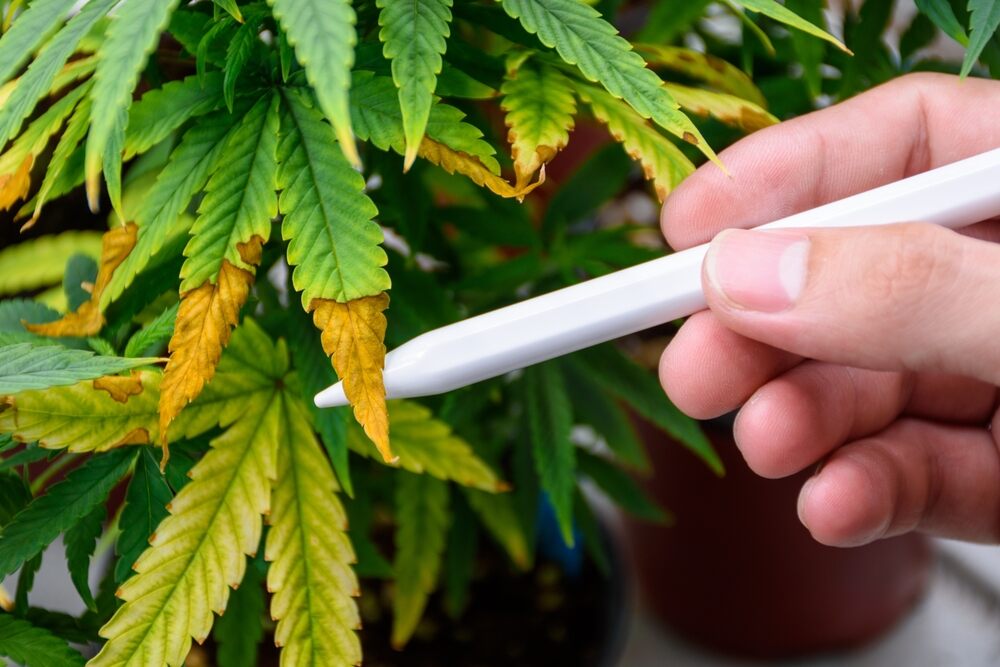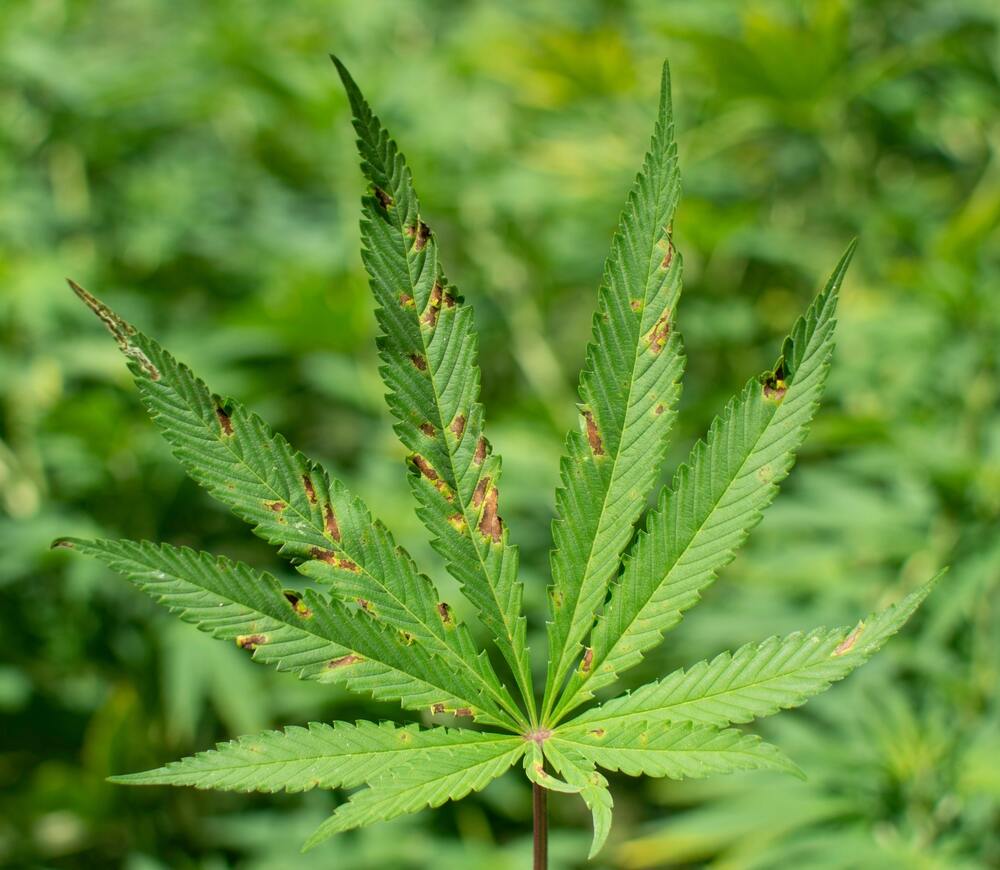The Best Fluffy Pancakes recipe you will fall in love with. Full of tips and tricks to help you make the best pancakes.

How to Identify and Fix Cannabis Deficiencies?
Growing cannabis is an art form, and just like any other plant, your weed needs the right nutrients to thrive. When your cannabis plants start showing signs that something’s off, it’s often a deficiency in one of the many essential nutrients they rely on. Lucky for you, spotting and fixing these problems is totally doable. In this guide, I’ll walk you through how to recognize the most common marijuana deficiencies and what you can do to get your plants back on track and keep them healthy.
What are Cannabis Deficiencies?
Cannabis deficiencies happen when your plants aren’t getting the right nutrients, and trust me, they’ll let you know when they’re feeling sick. These deficiencies can be caused by a lot of things, from poor soil to pH imbalances, or even just missing out on key nutrients. And yes, a lack of good ol’ TLC can do it too.
The importance of proper nutrient balance
Nutrient balance is everything when it comes to healthy cannabis plants. You don’t want too much of one thing or too little of another. It’s like a delicate dance — your plants need the right combo of macronutrients (think nitrogen, phosphorus, potassium) and micronutrients (like calcium and magnesium) to stay healthy and avoid getting sick.
Common causes of deficiencies in cannabis plants
Some of the most common causes of nutrient deficiencies in weed include:
- Incorrect pH levels in soil or water
- Overwatering or underwatering
- Nutrient lockout (when nutrients are present but your plant can’t absorb them)
- Poor-quality soil or grow medium
How environmental factors affect cannabis nutrient uptake
Things like temperature, humidity, and light exposure can totally mess with how your plants absorb nutrients. Too much heat or humidity, for example, can make it harder for roots to take up what they need, and this can lead to deficiencies even if you’re feeding them right.
Identifying Cannabis Deficiencies: Visual Symptoms

Your plants are pretty good at showing when something’s wrong, but you’ve got to know what to look for. Visual symptoms are key here, and once you get the hang of it, you’ll be able to diagnose exactly what’s missing.
Symptoms of nitrogen deficiency
If your cannabis leaves are turning yellow, especially the lower ones, that’s a classic sign of nitrogen deficiency. This nutrient is crucial for growth, so when your plant doesn’t get enough, it starts to cannibalize older leaves to feed new growth.
Symptoms of phosphorus deficiency
Purplish stems and slow growth could mean your plant’s not getting enough phosphorus. You’ll also notice dark spots on leaves, especially on the lower ones.
Symptoms of potassium deficiency
Yellowing at the edges of leaves and crispy brown tips are dead giveaways for potassium deficiency. This one’s especially common during the flowering stage.
How to recognize magnesium deficiency
When magnesium is missing, you’ll see yellowing between the veins of leaves. It usually starts on the lower leaves and works its way up. Keep an eye out for this because it can slow down the whole plant’s growth.
Calcium deficiency symptoms
If your leaves have crinkly edges or you spot brown spots, you might be dealing with a calcium deficiency. This one hits the newer growth first, so always check the top of your plants.
Other trace mineral deficiencies to look out for
Don’t forget the little guys! Deficiencies in zinc, copper, or iron can cause a variety of issues, like twisted growth or weird color changes. These are rarer but still important to keep an eye on.
Differentiating nutrient deficiencies from other plant problems (e.g., pests, diseases)
Not everything that looks like a deficiency is actually one. Sometimes pests or diseases can mimic nutrient problems. If you’re noticing bugs or weird molds, those could be your culprits instead of a lack of nutrients. Always check for pests before assuming you’ve got a deficiency.
Diagnosing Cannabis Deficiencies: Tools and Techniques

When your plants start acting up, it’s time to play detective. You can’t always go off symptoms alone, so using a few simple tools can help you properly diagnose the problem.
Using soil and water pH meters
First off, grab yourself a pH meter. Cannabis is pretty picky about pH levels, and if they’re off, your plants won’t absorb nutrients properly even if they’re available. Ideal pH for soil is between 6.0 and 7.0, while hydro setups should be between 5.5 and 6.5.
Analyzing plant tissue and soil tests
If you want to get super scientific, tissue and soil tests can help you identify exactly what nutrients are in short supply. It’s a bit more advanced but definitely worth it if you’re serious about nailing down the problem.
The importance of nutrient charts
Nutrient deficiency charts are a grower’s best friend. These charts visually show you what deficiencies look like, making it easier to match symptoms with the right fix.
Monitoring plant development stages for early deficiency detection
Different stages of your plant’s life require different nutrients. Keep an eye on them, especially during growth spurts and flowering, because that’s when deficiencies tend to pop up.
Fixing Cannabis Deficiencies: Solutions for Each Nutrient Deficiency
Once you’ve identified what’s wrong, fixing the issue is pretty straightforward. Each nutrient has its own solutions.
Correcting nitrogen deficiency
To fix a nitrogen deficiency, I like to use a nitrogen-rich fertilizer. Organic options like bat guano or blood meal are my go-tos. You’ll see those yellow leaves turn green again in no time.
Addressing phosphorus deficiency
For phosphorus deficiency, I suggest using a high-phosphorus fertilizer or adding bone meal to your soil. It takes a bit longer to see results, but your plants will bounce back.
Solving potassium deficiency issues
A potassium-deficient plant can be helped with a potassium-heavy fertilizer or kelp meal. Just make sure you act quickly, because this one can hit hard if left untreated.
Remedying magnesium deficiency
A quick fix for magnesium deficiency is to use Epsom salts (yup, the same stuff you bathe in). Mix it into your water and feed it to your plants.
Resolving calcium deficiency in plants
For calcium deficiency, try adding lime to your soil, or use a calcium-magnesium supplement. Both of these will help rebuild those strong cell walls your plants need.
How to fix trace mineral deficiencies (e.g., zinc, iron)
If your plants are lacking in trace minerals, look for a micronutrient supplement designed for cannabis. Foliar feeding (spraying the leaves) is also an option for quick absorption.
Preventing recurring deficiencies with a nutrient schedule
The best way to avoid deficiencies in the future is to follow a solid nutrient schedule. I recommend keeping a grow diary to track feeding, pH levels, and any issues that pop up.
Preventing Cannabis Deficiencies: Best Practices
Prevention is always better than a cure, and a few smart practices can help you avoid nutrient deficiencies altogether.
Choosing the right growing medium
The right growing medium makes a huge difference. Whether you go with soil, coco coir, or hydroponics, make sure it’s rich in nutrients and drains well to prevent waterlogging.
Ensuring balanced nutrients from the start
Start your plants off right with a balanced nutrient mix. I always like to give them a little bit of everything from day one to make sure they’re set for success.
Monitoring pH levels regularly
Don’t forget to regularly check your pH levels. I can’t stress this enough. Keeping pH in check ensures your plants can actually absorb the nutrients you’re giving them.
Best watering practices to avoid nutrient lockout
Overwatering or underwatering can lead to nutrient lockout, so make sure you’ve got a solid watering schedule in place. Let the soil dry out a bit between waterings, but don’t let it get bone dry either.
Using supplements and foliar sprays effectively
Supplements and foliar sprays can give your plants an extra boost, especially if they’re recovering from a deficiency. Just don’t overdo it — too much of a good thing can cause even more problems.
The Role of pH in Cannabis Nutrient Uptake
Understanding pH is crucial to keeping your cannabis plants healthy, because if the pH is off, even the best nutrients won’t help.
How pH levels affect cannabis plant health
If the pH is too high or too low, your plant won’t absorb nutrients properly. You might have plenty of nitrogen in the soil, but if the pH is wrong, it’s like your plant’s roots are wearing earplugs — they just won’t hear the nutrients calling.
Optimal pH levels for soil vs. hydroponics
For soil, keep the pH between 6.0 and 7.0. In hydro, it’s a bit lower — aim for 5.5 to 6.5. Staying in these ranges will help your plants get the nutrients they need.
Adjusting pH levels to prevent or correct nutrient deficiencies
If you find your pH is off, you can adjust it using pH up or down solutions. Test regularly and make small adjustments as needed. Your plants will thank you.
Organic vs. Synthetic Solutions for Cannabis Deficiencies
When it comes to fixing nutrient deficiencies, you’ve got two options: organic or synthetic solutions. Both have their pros and cons.
Benefits of organic nutrient solutions
I’m a big fan of organic nutrients because they’re natural and less likely to cause nutrient lockout. Plus, they’re better for the environment and help improve soil health over time.
Pros and cons of synthetic nutrient fixes
Synthetic solutions are fast and powerful, but they can be harsh on your plants if you’re not careful. They’re more likely to cause pH swings and nutrient burn if you overdo it.
When to use organic or synthetic solutions based on plant needs
If your plants need a quick fix, synthetics can be your best friend. But for long-term health, I always recommend going organic whenever possible.
FAQ:
What are the most common nutrient deficiencies in cannabis?
Nitrogen, phosphorus, and potassium are the most common deficiencies in cannabis. Each causes distinct symptoms like yellowing leaves, slow growth, or brown edges.
How can I quickly fix a cannabis nutrient deficiency?
Identify the missing nutrient, adjust pH if necessary, and apply the right fertilizer or supplement to correct the deficiency.
How long does it take for plants to recover from a deficiency?
Recovery time depends on the severity, but most plants show improvement within a week or two after the deficiency is fixed.
Can overfeeding cause nutrient deficiencies in cannabis plants?
Yes, overfeeding can cause nutrient lockout, preventing plants from absorbing essential nutrients even when they’re present.
What is nutrient lockout, and how can it be avoided?
Nutrient lockout occurs when pH levels are off or there’s an imbalance in nutrients. Avoid it by regularly checking pH and using balanced nutrients.
Identifying and fixing cannabis deficiencies might seem tricky at first, but once you know what to look for, it becomes second nature. Just remember to keep an eye on your plants, monitor your pH levels, and give them the nutrients they need at the right time. With a little practice, your plants will thrive, and you’ll be rewarded with some seriously healthy buds. Happy growing!




